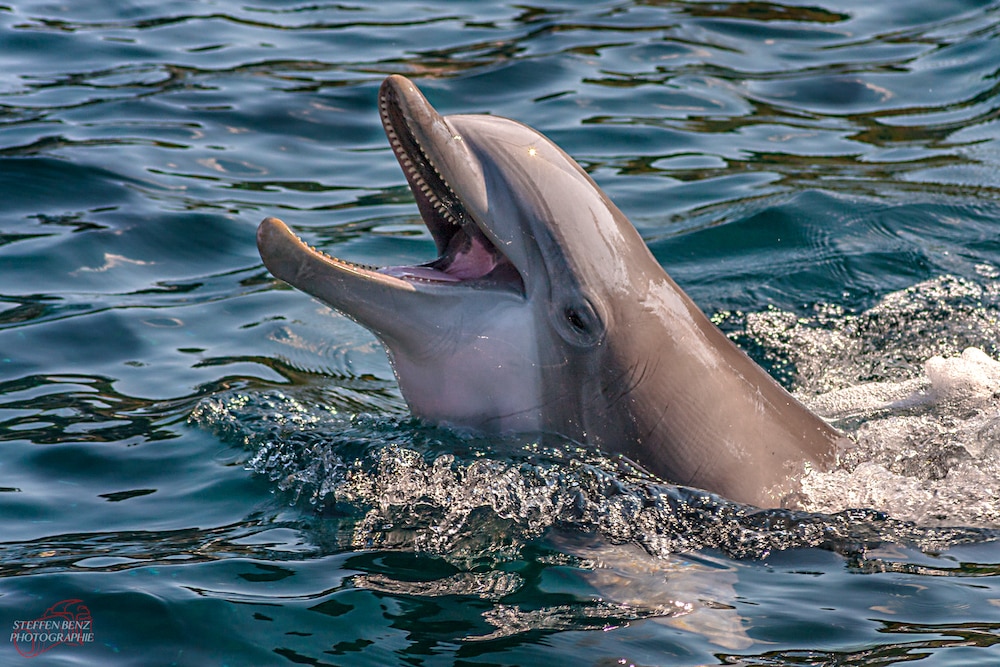Create a free profile to get unlimited access to exclusive videos, sweepstakes, and more!
The secret to dolphin speech might be... the piccolo?
Turns out, dolphins would rather hear our music than our rambling.

The question of what makes humans different from other animals has been debated since time immemorial. At intervals, it’s been thought to be our opposable thumbs, tool usage, or our ability to communicate using complex language.
At every turn, we’ve discovered that those abilities and behaviors aren’t necessarily unique to humans. We aren’t the only species with thumbs and we’re not the only species to use tools. Certainly, our ability to communicate with one another — to share complex ideas and information — has been essential for the creation of our society, but it turns out that language isn’t unique to us either.
More and more, we’re discovering that plenty of other animal species also have language, even if it is less complex than our own. Hippos, for instance, use specific behaviors and calls which communicate valuable information to their peers. Several great apes have exhibited an ability to understand human speech and learn a modified version of sign language in order to communicate with humans. Birds and dogs also demonstrate an ability to learn a limited vocabulary.
It might be that the primary thing preventing us from effectively communicating across the species boundary is our own arrogance in believing that complex communication is the sole domain of human beings.
While the debate over whether animals have language rages on, both in the scientific community and the larger public, there are a few species about whom we’re pretty sure some level of complex communication exists. Chief among these is the dolphin.
We’ve known for decades that dolphins have a relatively high level of intelligence. Their brain to body ratio — a commonly accepted physical correlate to intelligence — is second in the animal kingdom only to our own. We also know that they communicate with one another through a combination of whistles, clicks, and body language. Those fact suggest at least the possibility of language which might be decipherable if we could just find a key for translating. There’s even evidence that dolphins have unique names they use to identify themselves and their peers.
We’ve been trying for decades to communicate with dolphins, since just about the moment we realized dolphins likely had the potential for language. Some of those experimental attempts have been less than ideal, involving bizarre social interactions and the use of illicit substances, but we digress.
Understanding dolphin communication remains a challenge largely because we don’t even know the basic building blocks of their language, if they exist. Human speech is made up of phonemes, basic sounds which are used to construct words and phrases, sentences and complex thoughts. It’s possible that dolphins have an equivalent unit of language but we’re not sure. Moreover, we know that human speech isn’t universal. Different social groups and cultures have different languages. It isn’t as if all humans innately understand the same language simply by virtue of sharing a species. It wouldn’t be all that surprising to find that dolphins have comparatively variable language structures.
Recent research out of the Australian National University suggests that musical instruments might be a way for us to bridge the communication gap between humans and dolphins.
One of the primary challenges in decoding dolphin communication is that much of it occurs in frequencies outside the human hearing range. Sound travels in water differently than it does over the air. Dolphin communication can even have a physical sensation, owing to the sound vibrations interacting with the surface of a receiving dolphin’s body. The team at ANU believe that high frequency instruments might serve as a sort of common speech, existing both in the range dolphins usually use for communication and the range humans can hear and reproduce.
In December of 2021 a team of scientists and musicians from ANU boarded a boat in Port Stephens, New South Wales and commenced a special concert performance intended not for humans but for dolphins. The chosen instruments included the flute, piccolo, and the Indian wooden recorder, all of which create relatively high frequency sounds similar to those utilized in dolphin communication.
According to the team, a pod of dolphins approached he boat within minutes of the performance beginning and audio collected using hydrophone — an underwater microphone — showed that the dolphins responded to the music with their own vocalizations.
It’s unclear if the dolphins’ response was due to some property of the music or just the strangeness of those types of sounds coming from above their usual environment. Future experiments are planned, playing different types of music and using tools to play the sounds directly in the water, all while recording the dolphin’s responses in hopes of uncovering clues to their communication.


























